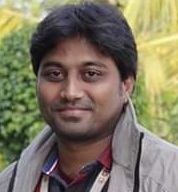Course Attendees
Still no participant
Course Reviews
Still no reviews
Course Name : Biometry
Code(Credit) : CUTM2324(3-0-1)
Course Objectives
- To understand the concept of biometry and its role in identification and various kinds of biometrics.
Course Outcomes
| S.NO. | DESCRIPTION | PO MAPPING |
| CO1 | To differentiate between physiological and behavioural biometrics. | PO1 |
| CO2 | To perform biometry using conventional methods. | PO1, PO2, PO11 |
| CO3 | To gain knowledge about different biometric systems. | PO1, PO9 |
Course Syllabus
Unit 1: Fundamental Aspects of Biometry
Definition, Biometric vs traditional techniques. Classification of biometric systems – physiological and Behavioural. Merits and demerits of physiological and Behavioural biometrics. Multimodal biometrics.
Unit 2: Key Biometric Process
Key biometric processes – enrolment, identification and verification. Positive and negative identification. Performance measures used in biometric systems – FAR, FRR, GAR, FTA, FTE and ATV.
Unit 3: Physiological Biometrics 1
Fingerprints, palm prints, geometry of hand; components, working principles, strength and weakness.
Unit 4: Physiological Biometrics 2
Iris, Retina and Face geometry; components, working principles, strength and weakness
Unit 5: Behavioural Biometrics 1
Handwriting, signatures, keystrokes, gait and voice; components, working principles, strength and weakness.
Unit 6: Behavioural Biometrics 2
Gait, voice; components, working principles, strength and weakness.
Unit 7: Standards in Biometrics
Assessing the privacy risks of biometric, need for standards, different biometric standards.
Suggested Readings
- Massimo Tistarelli, Handbook of Biometrics for Forensic Science.
- Archana Singh, Biometrics & It's Uses: 3 (Forensic Science).
- Monique Mann and Gregor Urbas Marcus Smith, Biometrics, Crime and Security.
- Nanavati, M. Thieme and R. Nanavati, Biometrics, Wiley India Pvt. Ltd. (2002).
- Reid, Biometrics for Network Security, New Delhi (2004).
- R. Vacca, Biometric Technologies and Verification Systems, Butterworth-Heinemann, Oxford (2007).
Session Plan
Session 1
Unit 1: Fundamental Aspects of Biometry
Definition, Biometric vs traditional techniques.
Session 2
Classification of biometric systems – physiological and Behavioural. Merits and demerits of physiological and Behavioural biometrics. Multimodal biometrics.
Session 3
Unit 2: Key Biometric Process
Key biometric processes – enrolment, identification and verification. Positive and negative identification.
Session 4
Performance measures used in biometric systems – FAR, FRR, GAR, FTA, FTE and ATV.
Session 5
Unit 3: Physiological Biometrics 1
Fingerprints : components, working principles, strength and weakness.
Session 6
palm prints: components, working principles, strength, and weakness.
Session 7
geometry of hand: components, working principles, strength and weakness.
Session 8
Iris: components, working principles, strength and weakness
Session 9
Retina : components, working principles, strength and weakness
Session 10
Face geometry: components, working principles, strength and weakness
Session 11
Handwriting: components, working principles, strength and weakness.
Session 12
Signatures: components, working principles, strength and weakness.
Session 13
Keystrokes : components, working principles, strength and weakness.
Session 14
Gait : components, working principles, strength and weakness.
Session 15
Voice : components, working principles, strength and weakness.
Session 16
Assessing the privacy risks of biometric, need for standards, different biometric standards.
Case Studies
Case Studies
Our Main Teachers

A.Avinash working as Assistant Professor, Dept of CSE, Centurion University of Technology and Management, Andhra Pradesh . Interested to work on Machine learning,Natural Language Processing,Problem Solving Methodologies , and ChatBot. Programming Skill: C Programming Data Structure Object Oriented Programming using C++ Formal Language Automata Theory Python Web Development(HTML,CSS,PHP) Database Management Systems Compilers

